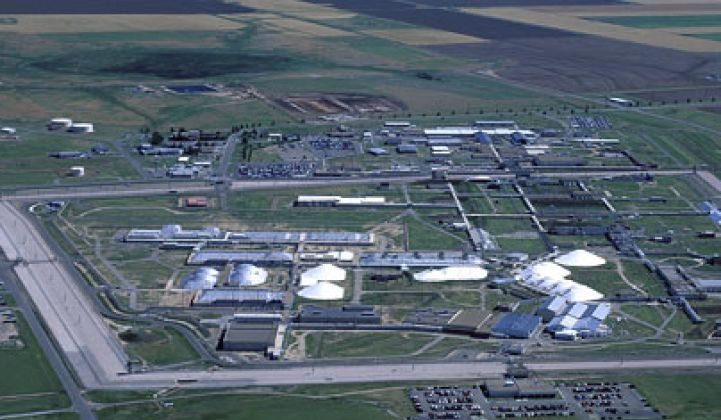Earlier this year, Siemens won a sustainability-related contract from the National Nuclear Security Administration (NNSA) that will allow the firm to construct and operate the government’s biggest wind farm ever.
What's unique about the Pantex wind farm is that it will provide 60 percent of the electricity needs of the NNSA’s nearby Pantex nuclear facility.
The project is being built in response to President Obama’s green energy initiatives, and the NNSA will meet most of its renewable energy goals with the planned facility.
The wind farm serves more purposes than pleasing the president, as it is strategically being built in Texas because of the high winds near Pantex. It’s also right next to the NNSA’s education partner, Texas Tech University. TTU will be using the wind farm to conduct research for the Department of Energy’s new wind turbine test facility: Scaled Wind Farm Technology (SWiFT).
SWiFT is innovating wind farm performance by reducing the power loss that occurs from turbine-to-turbine interaction called “shadowing.” Texas Tech will study complex wind wakes that are the main cause of the shadowing that creates the power loss. The wakes create increased turbulence and uneven loading on susceptible turbines, which affects their overall long-term functionality.
The wind farm itself will sport five 2.3-megawatt turbines on 1,500 acres of government property. The farm will provide greater than 60 percent of Pantex’s annual electrical needs. All of Siemens' payments for the contract will come out of the savings that Pantex accumulates.
The Pantex nuclear facility, through the Department of Energy, conducts missions related to nuclear weapons security and emergency response. Some of those missions include testing the U.S. stockpile of nuclear weapons without detonating them.
The Pantex Plant is expected to save an average of $2.9 million over the twenty-year federal contract.
In the past, the government has been cautious about constructing wind farms near government facilities because of the potential interference with radar and communications equipment. As usual, though, technology is improving, and those concerns are fading. The new holographic radar system developed by the company Aveillant can distinguish blades from other objects.
The construction of the Pantex wind farm will begin in December 2013.
***
Jeremy Higbee researches and writes about government bids and contracts.



